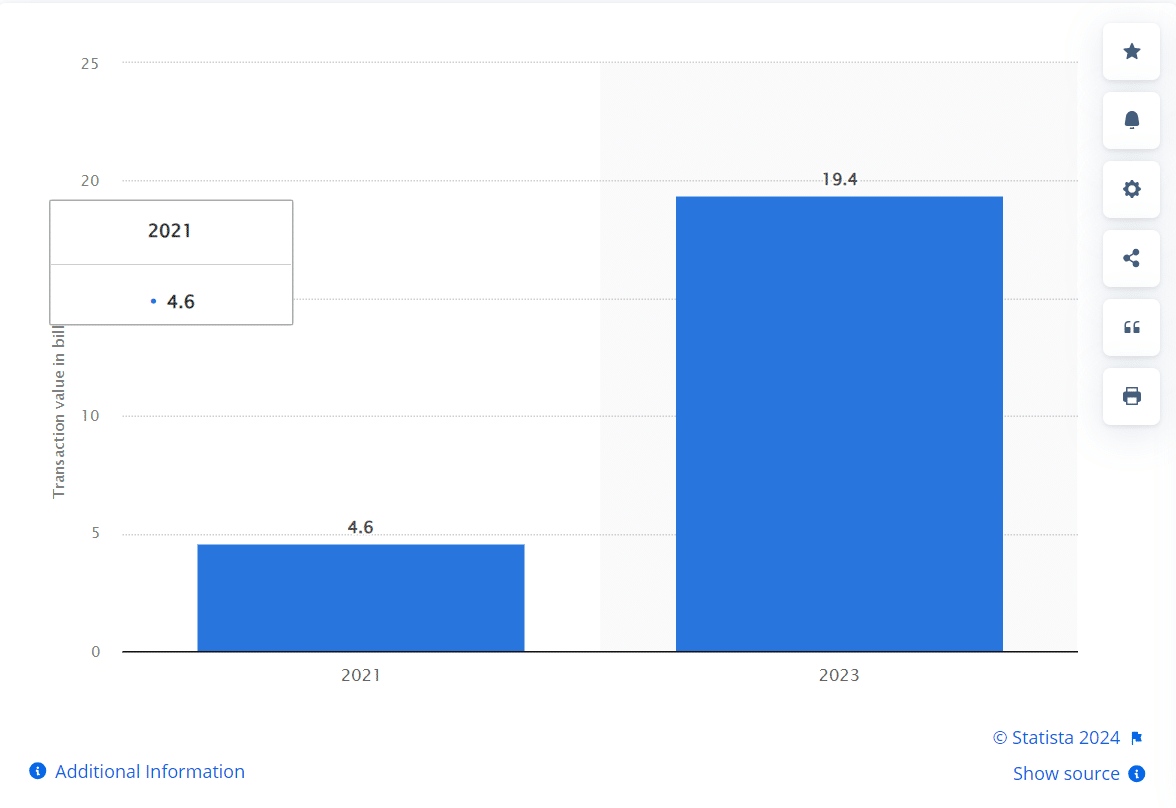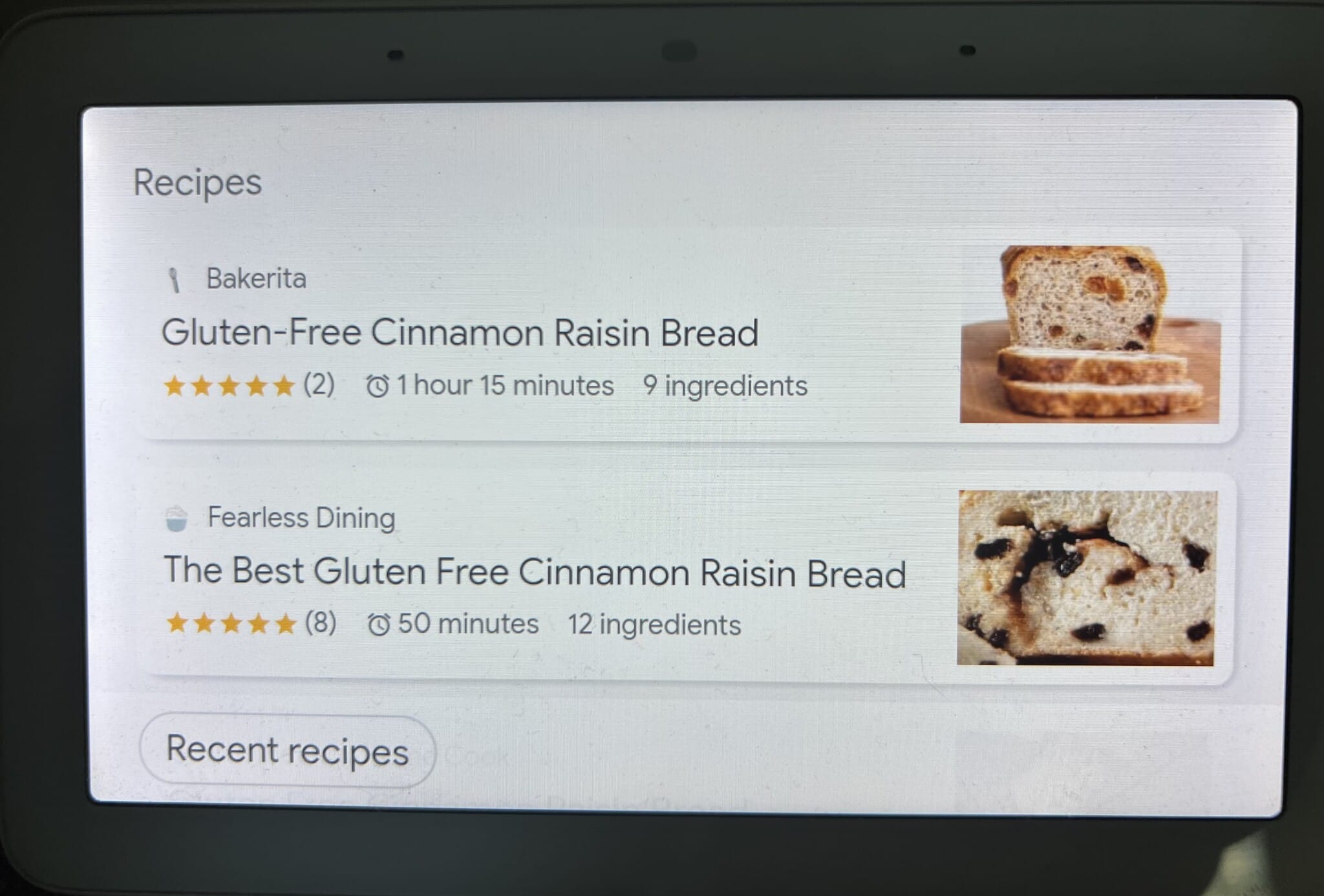
Voice Search Optimization (VSO) has become a focal point in SEO strategy, especially in local contexts. With Siri, Alexa, and Google Assistant becoming as common as texting, businesses need to lean into the trend or risk being left behind.
Impact of Voice Search in eCommerce
Picture this: You’re elbow-deep in cooking, and you suddenly realize you’re out of olive oil. No sweat! Just holler at your smart speaker, “Hey Google, order olive oil from the nearest store,” and you’re back to being the kitchen hero. This isn’t just convenient but a shopping revolution.

Over one-third of U.S. homes now have smart speakers, turning living rooms into the new retail frontier. This boom in smart home devices means optimizing for voice search is no longer a ‘nice-to-have’ but a ‘must-have’ for businesses. Whether it’s answering burning questions like “Where’s the closest vegan bakery?” or “Is there a superhero costume shop nearby?”, your content needs to be ready to respond across all smart devices.
Understanding Voice Search
Voice search, powered by our AI like Siri, Alexa, and Google Assistant, is less about typing and more about talking—like asking your phone for the best pizza place that delivers at midnight. This shift to a more conversational, location-based, and ‘I-need-it-now’ approach is crucial for businesses aiming to optimize their online presence for local searches.
Let’s look at some examples that might sound familiar:
- Caffeine Fix on the Fly: “Hey Google, where’s the closest place to get a latte?”
- City Adventure: “Siri, what’s the quickest route to the art gallery downtown?”
- Last-Minute Errands: “Alexa, when does the local market close tonight?”
- Sunscreen Emergencies: “Hey Google, find a drugstore nearby that has SPF 1000.”
- Plumbing Catastrophes: “Alexa, I need an emergency plumber, like, yesterday!”
- Spontaneous Weekend Plans: “Siri, what’s the latest scoop on events this weekend?”
- Dining Dilemmas: “Hey Google, what are the top-rated sushi spots near me?”
Strategy for VSO and Local SEO
Mastering Voice Search Optimization (VSO) and Local SEO is like learning to speak another language. It’s all about tuning into the wavelength of your market’s voice. This means giving your content a makeover: more chatty, more local, and tailored to the voice queries of today’s tech-savvy folks.
Here are some voice search optimization strategies:
- Embrace Conversational Tone: Voice searches are like casual chats. Crafting content that sounds like a natural conversation boosts your voice search opportunities. Consider how you would ask a question and what you’d want the answer to be. For example, you wouldn’t ask, “Hey Google, what are the hours of operation for [business]?” but what you would say is, “Hey Google, what are [business] hours today?”
- Local Keywords Are Crucial: Sprinkle your content with local landmarks, city names, and colloquial terms. It’s like giving your business a local flavor that search engines and customers love.
- Optimize for ‘Near Me’ Queries: Make sure your business’s name, address, and phone number (NAP) are consistent everywhere online, especially business pages and directory listings. It’s like leaving breadcrumbs for customers to find you while proving authenticity to search engines.
- Direct Answers to Common Questions: People using voice search often want quick answers. Think of your content as a friendly local guide, ready with quick, helpful answers. Think of it as the cliff-notes instead of the full novel.
- Utilize Long-Tail Keywords: Long-tail keywords in voice searches are crucial because they match how people naturally talk and ask questions. Users don’t ask for general “bread recipes” but instead, “Hey Google, what is a five-star rated gluten-free recipe for cinnamon raisin bread.”
Optimizing Images for Voice Search
With the rise of voice search, especially on mobile devices and smart speakers, optimizing images for this new search landscape might seem counterintuitive. After all, voice search users won’t always see images unless they’re using a hub or their smartphone. However, there are strategic ways to make your images more relevant and accessible for voice search queries.
Here are some best practices:
- Use Structured Data and Schema Markup: Think of structured data as teaching search engines to speak ‘image.’ By using schema markup, you’re essentially giving your images a voice. For example, if you’re selling the latest smartphone on your eCommerce site, use schema markup to tell search engines all about it – from the model to the snazzy features. It’s like creating a dating profile for your products but for search engines.
- Optimize Image Alt Text with Descriptive Keywords: Alt text isn’t just a backstage pass for SEO; it’s your secret weapon for voice search too. Use alt titles and text that are as descriptive as they are clever, making sure they’re relevant to those voice queries.
- Use High-Quality and Relevant Images: Don’t just use any image. Choose images that pop and sizzle. High-quality, relevant images are like eye candy that also speaks to the soul—or in this case, to voice search algorithms. Remember, your images can still be seen with voice search.
- Optimize for Mobile and Fast Loading Times: Since voice search is often performed on mobile devices, it’s essential that your images are optimized for mobile. This means they should be correctly formatted, compressed for lightning-fast loading times, and displayed properly on various screen sizes.
Voice search technology, like everything else in digital marketing, is constantly changing. Stay informed on the latest trends and algorithm updates. Consider the nuances of conversational queries and adapt your image optimization strategies accordingly for success.
Guiding You Through Voice Search Optimization
Ready to chat your way to the top of voice search results? Reach out to Plan Left. We’re all about embracing the latest in digital marketing, including voice search optimization. Let us help you tweak your content strategy to shine in this voice-activated world.
Explore Latest Posts
Back in 2021, Google’s Martin Splitt mentioned Centerpiece Annotations during a Duba webinar, and earlier this month, Gary Illyes mentioned ... read more
April 30, 2024
Since the last round of Core and Spam updates knocked nearly 40% of websites out of Google’s search index, it ... read more
April 26, 2024
Google says the quality of your webpage is a ranking factor, but what is ‘quality’ according to Google? That would ... read more
April 19, 2024
MARKETING insights
Join the Thousands Who Receive Our Twice-Monthly Newsletter.
It's hard to keep up. Our newsletter is packed with buyer behavior insights, the latest marketing and technology updates, work/life balance tips, and—because we ❤️ our support staff—adorable pets looking for forever homes. Only twice per month. No clogged inboxes. You can't say no.





